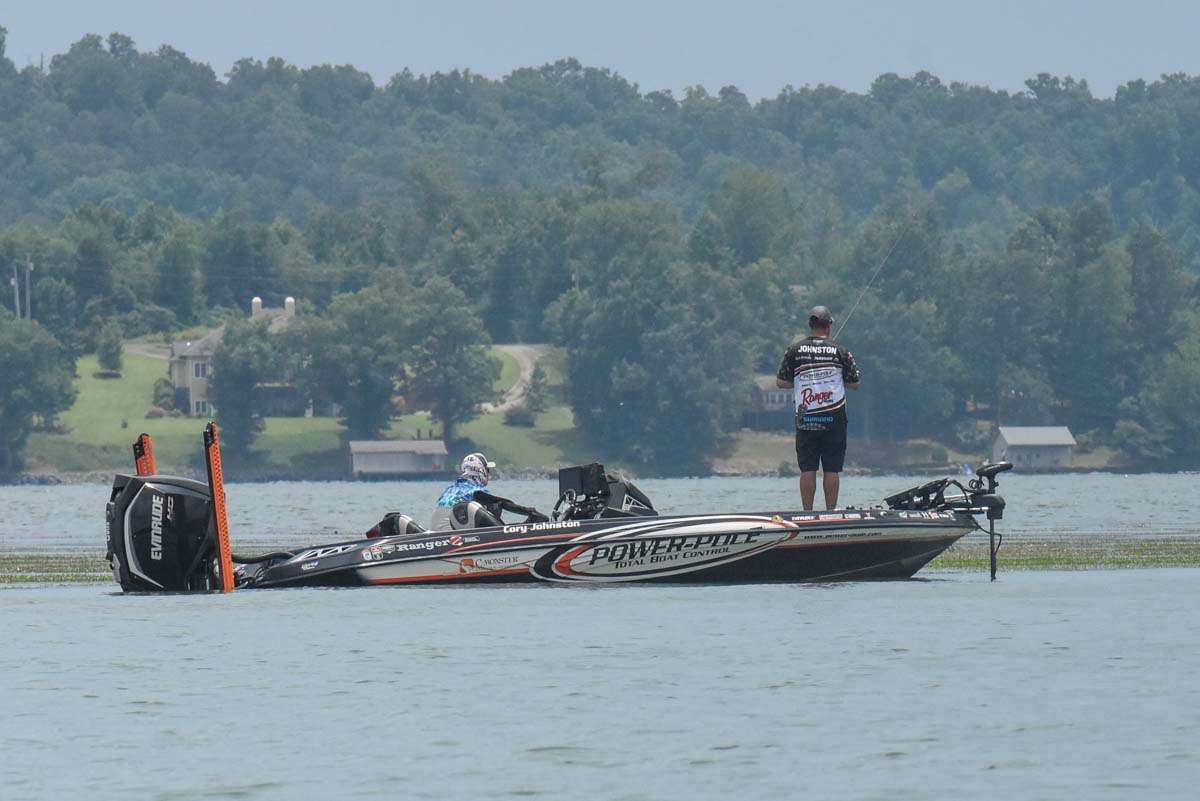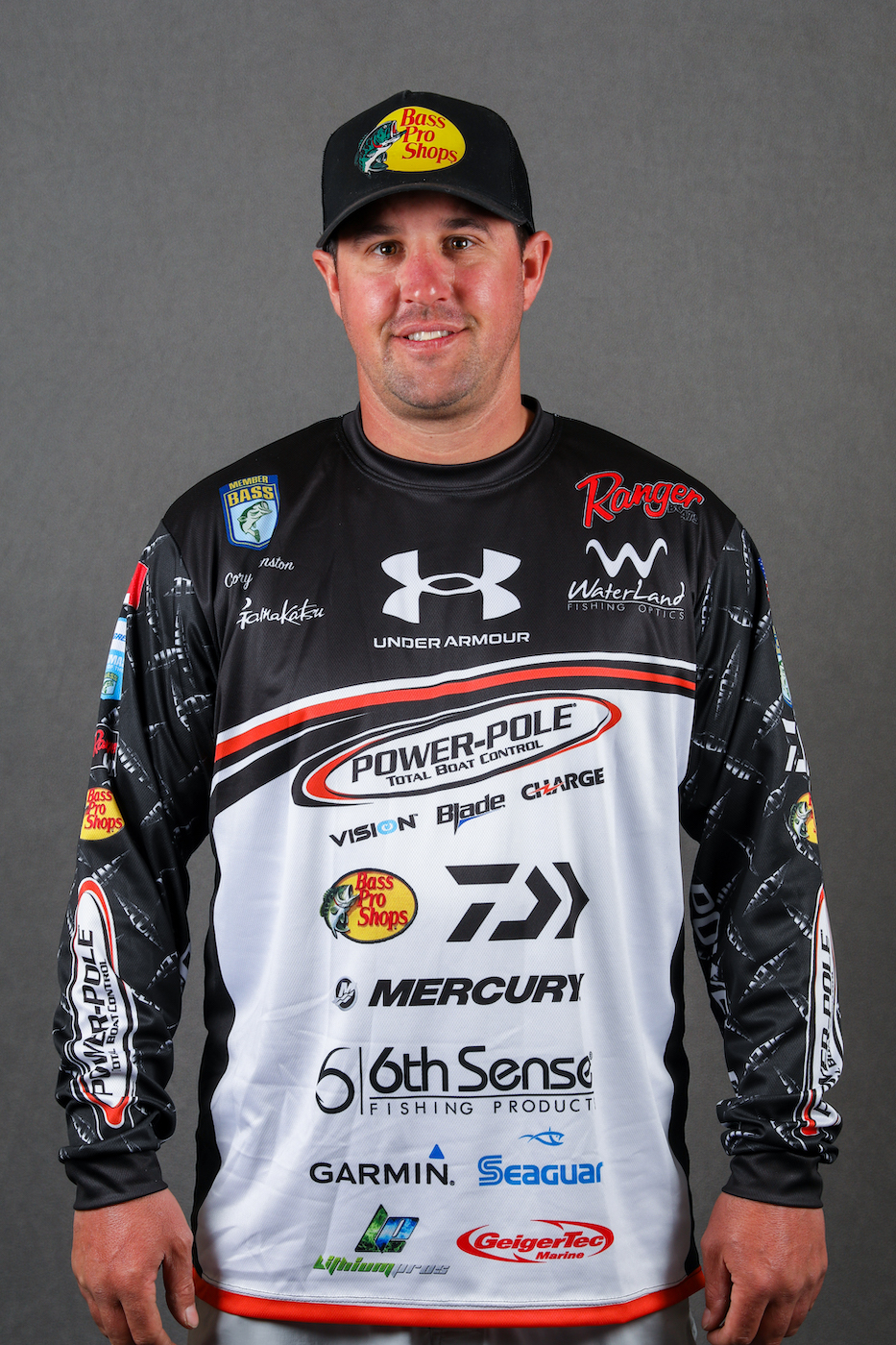
The next Bassmaster Elite Series stop happens to be my favorite fishery for tournaments.
That’s right, the St. Lawrence River. So I’d like to dedicate this column to covering the smallmouth structure I like to target in current. There are a lot of different things you can fish at the St. Lawrence, and in smallmouth rivers everywhere, but I typically focus on three different features. Here’s a rundown.
Depth drops
The first and most important structure for me is definitely breaks. These are ledges or humps — anything where the depth drops off. This is the main type of structure I focus on when I’m after smallmouth in rivers.
The breaks aren’t always adjacent to the shoreline — there could be a ledge right next to the main river channel, or a hump that rises out of the main river channel, or an underwater point that extends out from shore. If it’s a shoreline break, the fish are sometimes at the top (on the ledge), and sometimes they’re at the bottom, where the current is slower.
If the depth break is also breaking the current, like a hump, then the fish will either be right in front of it, feeding in the current, or resting in the slack water behind it. That’s why I like humps so much, because you can catch them when they’re feeding, and also when they’re sitting back more relaxed. That’s unique for a piece of structure.
I’ve noticed in the St. Lawrence that the depth of break doesn’t seem to matter much. It might drop of 3 feet deep, 10 feet, 20 feet or more. It’s just a place where the fish can push bait up against the ledge so they don’t have to chase it.
And I don’t really change baits for the feeding fish vs. the resting fish, but I do fish a heavier dropshot weight up-current from the structure to keep the bait down. In the slacker water, I can usually get away with a lighter weight for the same presentation, which can be important when I’m targeting neutral fish.
It’ll surprise a lot of guys, but you won’t really mark the fish on these breaks. They sit very tight to bottom in the current. So I’ll always take the time to drop, even if I don’t see fish. Sometimes I’ll even put my Aqua-Vu underwater camera down, so I can get a true understanding of what’s down there. I’m not sponsored by Aqua-Vu, I just like to use that camera. The one I’m using now is the HD10i Pro, which has onscreen water temp and depth displays. I attach a weight to stabilize it in the current, and it’s easy to hold the camera wire and take a good look around in the clear water.
Fish are actually tighter to the bottom now than they were in the past. They were always on the bottom eating crayfish, but nowadays they just don’t move as much, which is why you won’t mark them. They’re a lot more predictable. I think that’s probably because of the gobies. Why move when you’ve got so much food right there?
Big boulder milk runs
My second favorite smallmouth structure is boulders. Big ones. I’ll always spend a lot of time graphing and marking every boulder I can. Every smallmouth fisherman knows that a boulder will hold at least one smallmouth. At the St. Lawrence, it seems like they generally hold one big one, and maybe one small one.
Boulders are great for the fish because they offer a current break, shade if the water’s shallow, a concentration of food and probably some sense of safety.
For a tournament, I’ll set up a milk run of boulders, where I stop on each one, do a few short little drifts over it, then move on. If I catch a fish, it’s usually one-and-down, but if the fish is small I’ll drift some more. If the fish is big, I’ll move right away, because a boulder will typically only hold one big fish.
Again, I think the boulders used to replenish more quickly, but with the fish being more resident now, it takes longer. You generally can’t return to boulders in a tournament. That’s why you need to mark so many of them.
Places of change
Third on the list of my favorite structure is a bottom transition. In a lot of other places, gravel-to-rock transitions can be important. At the St. Lawrence, they’re really not — at least for me. The smallmouth seem to really like a flat bottom. So instead, I’m looking for transitions from hard bottom to soft, or rock to sand.
These transitions are easy to spot on my Garmin electronics. In the 2D view, the bottom will get hard. On side-imaging, it depends on the preferences you set. But you’re essentially looking for that color change on the bottom.
Also, I tend to want deeper transitions. It used to be that you could catch smallmouth pretty shallow at the St. Lawrence. They seem to all go deeper sooner now. I think it’s the pressure. It used to be easy to catch them shallow. Now it’s a pretty tough task.





